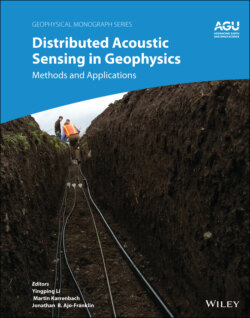Читать книгу Distributed Acoustic Sensing in Geophysics - Группа авторов - Страница 39
2.2.3. Deploying Fiber
ОглавлениеThe next determination is how the fiber will be deployed as the seismic sensor. Figure 2.1 shows three different deployment methods for DAS acquisition in a well. The retrievable fiber option uses an optical glass fiber installed inside either a wireline cable or coiled tubing. This option is by far the easiest to deploy, because it can be inserted into and removed from a well at any time. However, it is likely to have the lowest quality of strain measurement because the fiber is not directly coupled to the formation. A new method involves deploying a simple, disposable fiber‐optic glass line into the well (Higginson et al., 2017). In addition to the coupling issue, this method could encounter depthing problems, because there is no control of the tension (thus, placement) of the fiber in the well. Another option is to strap the fiber‐optic cable to production tubing; however, the highest quality comes from attaching the fiber‐optic cable to the outside of the casing, and cementing the casing. For this option, the fiber‐optic cable is directly coupled to the formation and has the best SNR of seismic signals propagating in the surrounding rock.
Figure 2.1 Options for acquiring DAS VSP data in a well.
To monitor teleseismic events, existing fiber‐optic telecommunication cables deployed in shallow‐buried conduits could be used (Martin et al., 2017). Described in the following section, the potential issue is that the broadside response of the fiber to strain is controlled by a cosine‐squared sensitivity to the angle of incidence for P waves, putting a null in the sensitivity for events arriving normal to the fiber. For yet another application, fiber‐optic cables buried in shallow trenches can be used to monitor surface waves, and then interferometric means can characterize the shallow earth properties (Martin et al., 2016).
